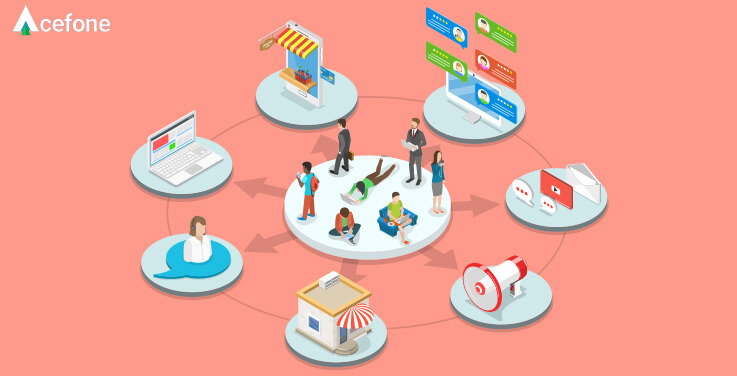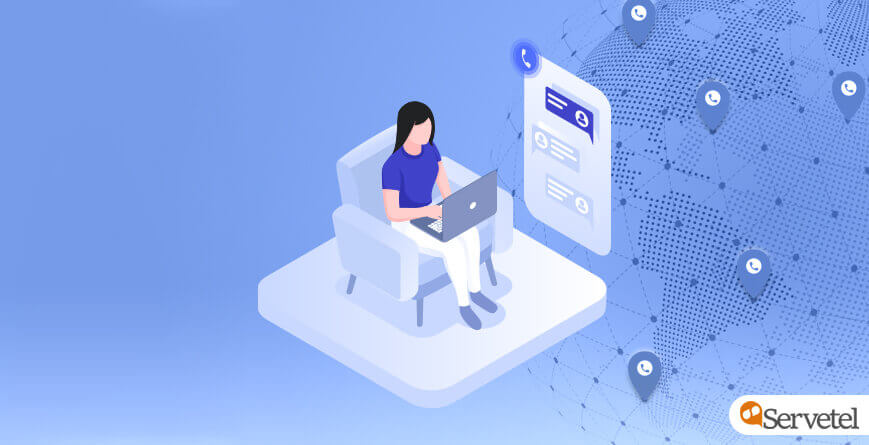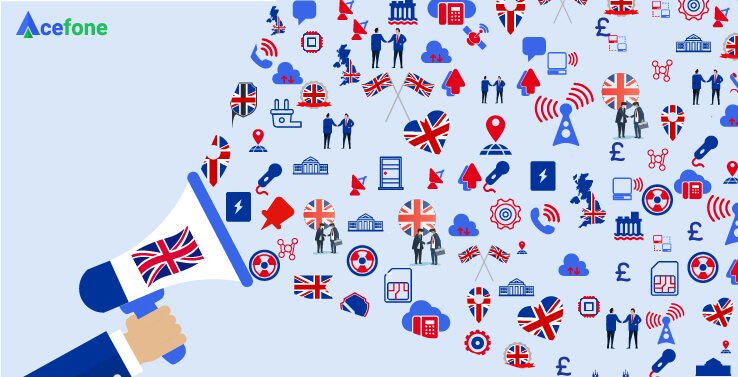Undeniably, the current business scenario would come to a complete standstill if it wasn’t for the telephones. Phone lines have widespread uses that include connecting your employees, knitting your target audience with your brand, and vice versa.
This being the situation, your business would take a back seat if you were to overlook phone lines. Even though a business may have multiple channels for their customers to reach out to, telephones are still considered the best and preferable medium for all customers.
The most important advantage of telephone lines is that their usage does not require any technical knowledge. Any child or adult can use a telephone effortlessly. Having this in mind, businesses began to use free phone numbers. This enabled customers across the world to contact a brand in a hassle-free manner. Additionally, these numbers were free-to-call which attracted more customers.
Let us understand toll free or free phone numbers in detail.
What are free phone numbers and how do you get one?
As the name suggests, free phone numbers facilitate inbound calls without charging any costs to the callers. However, as a business (or call receiver) you will bear the charges and pay your service provider. A toll free number is a centralised number that can be used across a country.
This number starts with the country code followed by a customised number that you may choose. At times, toll free numbers also come with vanity numbers. These increase the recall value and help your customers directly connect with the brand.
Free phone numbers are obtained through service providers of cloud telephony systems. These providers take complete charge and ensure the seamless functioning of your customer-facing communication system.
What is toll fraud?
As is the case with every other technological innovation, toll free numbers are also exposed to fraudulence and misuse. Strict rules are implemented to eliminate any chances of toll fraud.
Hoarding or warehousing of free phone numbers by a business or service provider is punishable and subjected to penalties. It is illegal for the service provider to block higher than the intended free phone numbers that they intend to use. Service providers may resell these numbers at a premium rate to business hence indulging in unfair practices.
Additionally, the selling of free phone numbers by businesses to other parties in the industry is also strictly prohibited.
What are the risks of toll fraud?
The major risk involved in toll fraud is number hijacking or short-stopping. In this scenario, the call traffic that is intended to reach your business will be hijacked by the fraudster.
Typically, when a customer calls your contact center using a toll free number, the call first connects to your service provider and then transfers the call to your representative.
In the case of toll fraud, the fraudster works in unison with the service provider. The calls are directed to the fraudster without the customer’s knowledge. The dishonest service provider shares the revenue obtained with the fraudster. These calls are typically used by the fraudster for advertising purposes.
Furthermore, in case you opt for a cloud telephony system, your information is available on a public network and this may involve the risks of a cyber-attack.
Are free phone numbers secure?
Every technological bottleneck comes with a suitable workaround. Risks of toll frauds can be proactively identified and promptly rectified.
In the case of toll frauds by telecom operators, you can set strict limitations to access your calling capabilities. They are as follows:
-
Reinforce account security
Ensure a stringent authentication process. Businesses should use a phone number and email address verification process to check the identity of the caller. It is also a good idea to partner with a third-party anti-fraud concern/organisation to make sure that fraudsters do not use your channel for their activities.
-
Limit your geo permissions
International toll free calls are an easy target for toll fraud. Restrict the usage to a few countries. Conduct a detailed survey to find the areas your customers or target audience belong to. If you feel particular geo permission is not required, do not think twice to turn off that phone line or deactivate it.
-
Diligently fix your call limits
Uninterrupted calls may attract toll fraudsters. They usually misuse newly created accounts as the call limits for these lines are not restricted. You should fix the number of calls you will receive every 60 minutes or every 24 hours. Furthermore, you may limit call duration and the exact number of permissible concurrent calls. This will ensure that the fraudster can’t create high traffic in a small period.
However, this method involves the risk of restricting legitimate customers as well. Whatever be the scenario, it is best to open your services for your customers only after appropriately verifying them.
On the other hand, we must remember that cloud telephony comes with limitless advantages. They secure your toll free kiosks from misuse and cyberattacks in the following ways:
-
Adherence to compliance
One most commendable capability of cloud systems is that they ensure compliance. Compliance protocols keep changing from time to time. Moreover, your business industry and geographical location also impact the type of compliance you will need for the smooth functioning of business processes.
Your cloud service provider identifies all said requirements and ensures that your communication system follows the best practices. Furthermore, compliance measures may change or get updated. The service provider keeps track of the same and updates your compliance protocols thereby enabling you to stay at par with the industry requirements. Hence, protecting your ecosystem from fraudsters.
-
Follows strict security protocols
Every IT network or communication system is prone to risk through malware, viruses, and cyber threats. Your service provider understands such risks and ensures the required anti-virus, anti-malware, and firewalls are in place to appropriately detect the entry of unwanted entities.
Furthermore, it is noteworthy that a few service providers insist on training your in-house staff about the dangers of cyberattacks and how they can contribute towards avoiding them.
They educate employees about the benefits of using strong passwords that aren’t easily guessed along with emphasising the need for a multi-factor authentication system for access to sensitive information.
Moreover, service providers brief employees about the risks of opening unknown links and emails. They advise employees to avoid unnecessary downloads and verify email senders if they receive messages from unknown addresses.
-
Proactive and reactive responses
Cloud service providers adhere to a combined approach that is proactive and reactive. They detect bottlenecks in advance and rectify them promptly. Also, service providers are equipped to handle concerns as and when they arise.
This makes sure that your system is forever under the supervision and thereby safe.
-
Continuous monitoring
The cloud telephony provider not just offers you the telephone lines but also constantly monitors your system. They may also have a 24/7 helpdesk in place that allows you to inform any technical issues that need urgent attention. Your service provider will enable real-time alerts that will equip them to address concerns spontaneously without letting them complicate into a bigger issue.
Such constant technical support ensures that your communication system is secure.
Wrap Up
Free phone numbers are most preferable by customers. However, their use may involve a few risks. We hope the above-mentioned points will highlight the different types of risks associated with free phone numbers and how they can be successfully mitigated. Hence, making them a secure medium of communication.






























